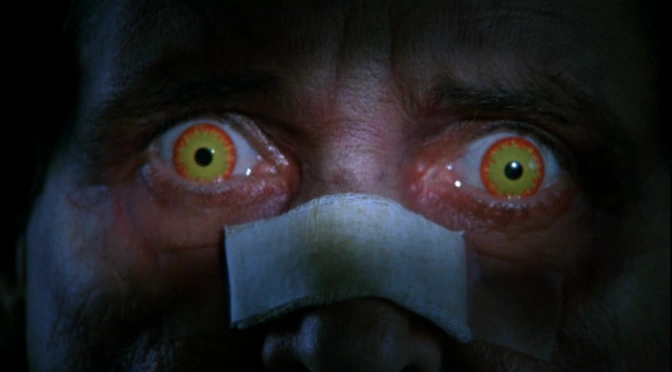
The Exorcist III: An Underrated Horror Masterpiece
The Exorcist franchise has long been regarded as one of the most iconic and influential horror sagas in cinematic history. The original 1973 film, directed by William Friedkin and based on the novel by William Peter Blatty, captivated audiences with its chilling portrayal of demonic possession and the battle between good and evil. The film’s success spawned a series of sequels and prequels, each attempting to recapture the magic of the original.
One such sequel, The Exorcist III, released in 1990, has often been overlooked and underappreciated by both critics and audiences. Directed and written by Blatty himself, the film sought to continue the story of the Exorcist universe in a unique and compelling way. However, it faced numerous challenges during its production and release, ultimately leading to a divisive reception.
In this in-depth blog post, we’ll dive into the history, themes, and critical analysis of The Exorcist III, exploring why this film deserves a closer look and a reevaluation of its place within the Exorcist canon.
The Troubled Journey of The Exorcist III
The origins of The Exorcist III can be traced back to Blatty’s 1983 novel, Legion, which served as a direct sequel to the events of the original Exorcist film. Blatty, who had written the screenplay for the first Exorcist movie, was eager to continue the story and explore the deeper themes of good versus evil, the nature of the human soul, and the role of the Catholic Church in the face of supernatural forces.
However, the path to bringing The Exorcist III to the big screen was anything but smooth. Blatty initially struggled to secure the necessary funding and support from studios, as they were wary of revisiting the Exorcist franchise after the critical and commercial failure of Exorcist II: The Heretic in 1977.
It wasn’t until the late 1980s that Blatty finally managed to strike a deal with 20th Century Fox to produce the film. But even then, the studio’s involvement would prove to be a double-edged sword, as they exerted significant creative control over the project, ultimately leading to a series of compromises and changes that would impact the final product.
Navigating the Challenges of Adapting Legion
One of the primary challenges faced by Blatty in adapting his novel Legion for the screen was the inherent differences between the literary and cinematic mediums. The novel, with its intricate psychological exploration and complex narrative structure, presented a unique set of obstacles for a direct translation to the big screen.
Blatty recognized that a straightforward adaptation of the book would likely not resonate with mainstream audiences, who were expecting a more traditional Exorcist-style horror experience. As a result, he made the strategic decision to significantly restructure the story, introducing new elements and characters while retaining the core themes and narrative arcs from the novel.
This creative decision, while understandable from a commercial standpoint, would ultimately lead to some of the film’s most divisive aspects. The blending of psychological thriller elements with the expected supernatural horror tropes of the Exorcist franchise created a unique, but at times uneven, cinematic experience.
The Exorcist III: A Psychological Thriller with Supernatural Undertones
At the heart of The Exorcist III is the character of Detective Kinderman, played by the esteemed actor George C. Scott. Kinderman, a character who had previously appeared in the original Exorcist film, is tasked with investigating a series of mysterious murders in Washington, D.C. that bear the hallmarks of the Gemini Killer, a serial killer who was executed 17 years earlier.
As Kinderman delves deeper into the case, he uncovers a connection between the recent killings and a patient in a psychiatric hospital, a man who claims to be the Gemini Killer reincarnated. This narrative thread allows Blatty to explore the psychological complexities of the human mind, the nature of evil, and the blurred lines between sanity and madness.
The film’s pacing and tone shift between moments of tense, psychological suspense and the occasional burst of supernatural horror, reflecting the duality of the story’s themes. Blatty’s script masterfully weaves together these disparate elements, creating a cinematic experience that is both unsettling and thought-provoking.
The Exorcist III: A Divisive Reception and the Director’s Cut
When The Exorcist III was released in theaters in 1990, it faced a mixed reception from both critics and audiences. Some praised the film’s atmospheric tension, strong performances, and Blatty’s thematic exploration, while others were disappointed by the lack of overt supernatural elements and the perceived deviation from the Exorcist formula.
One of the primary points of contention was the film’s climactic exorcism sequence, which was added at the insistence of the studio. Blatty, who had envisioned a more subdued and psychological conclusion to the story, was forced to incorporate this scene, which many felt disrupted the film’s carefully crafted tone and pacing.
In the years since its initial release, however, The Exorcist III has undergone a critical reevaluation, with many fans and critics recognizing the film’s unique merits and the vision that Blatty had originally intended. The release of a “director’s cut” version, titled Legion, has allowed audiences to experience the film more closely aligned with Blatty’s original creative vision, shedding light on the compromises and studio interference that shaped the theatrical release.
Exploring the Themes and Symbolism of The Exorcist III
Beyond the surface-level narrative, The Exorcist III is rich with thematic depth and symbolic resonance. Blatty’s script delves into the complex relationship between faith, morality, and the nature of evil, exploring the ways in which the supernatural and the psychological intersect.
The Duality of Good and Evil: The film’s central conflict revolves around the battle between the forces of good, represented by the Catholic Church and the character of Kinderman, and the pure evil embodied by the Gemini Killer. This duality is further explored through the character of the patient in the psychiatric hospital, who claims to be the Gemini Killer reincarnated, blurring the lines between the physical and the metaphysical.
The Role of the Catholic Church: The Exorcist franchise has always been deeply rooted in the Catholic faith, and The Exorcist III continues this tradition. The film explores the Church’s role in confronting the supernatural, as well as the internal struggles and doubts that plague the characters’ religious beliefs.
The Nature of the Human Mind: Blatty’s script delves into the complexities of the human psyche, examining the thin line between sanity and madness, and the ways in which the mind can be manipulated and corrupted by external forces, both physical and metaphysical.
Symbolism and Imagery: The film is rich with symbolic imagery, from the recurring motif of the cross to the use of light and shadow to convey the shifting balance of power between good and evil. These visual elements work in tandem with the thematic exploration, creating a multi-layered cinematic experience.
The Legacy of The Exorcist III
While The Exorcist III may not have achieved the same level of critical and commercial success as its predecessor, it has nonetheless left a lasting impact on the horror genre and the Exorcist franchise as a whole.
The film’s unique blend of psychological thriller and supernatural horror has influenced subsequent horror films, particularly those that seek to explore the darker recesses of the human mind. Its thematic depth and exploration of the nature of evil have also inspired further discussions and analyses within the horror community.
Moreover, the release of the “director’s cut” version, Legion, has allowed audiences to appreciate Blatty’s original vision for the film, shedding light on the creative compromises and studio interference that shaped the theatrical release. This has led to a renewed appreciation for the film’s artistic merits and a reevaluation of its place within the Exorcist canon.
Rediscovering the Depth of The Exorcist III
In the end, The Exorcist III stands as a complex and multifaceted entry in the Exorcist franchise, one that deserves a closer examination and a reevaluation of its merits. While it may not have achieved the same level of mainstream success as the original film, it offers a unique and thought-provoking exploration of the themes that have long defined the Exorcist universe.
By delving into the film’s troubled production history, its thematic depth, and the critical reception it has received over the years, we can gain a deeper appreciation for the artistic vision that Blatty sought to bring to the screen. The Exorcist III may not be the most commercially successful Exorcist film, but it is a testament to the enduring power of the franchise and the creative risks that can be taken within the horror genre.
So, if you’re a fan of the Exorcist franchise or a lover of psychological horror, I encourage you to revisit The Exorcist III and discover the depth and complexity that this underappreciated sequel has to offer. Who knows, you might just find a new appreciation for this unique and compelling entry in the Exorcist canon.













Publicar comentário